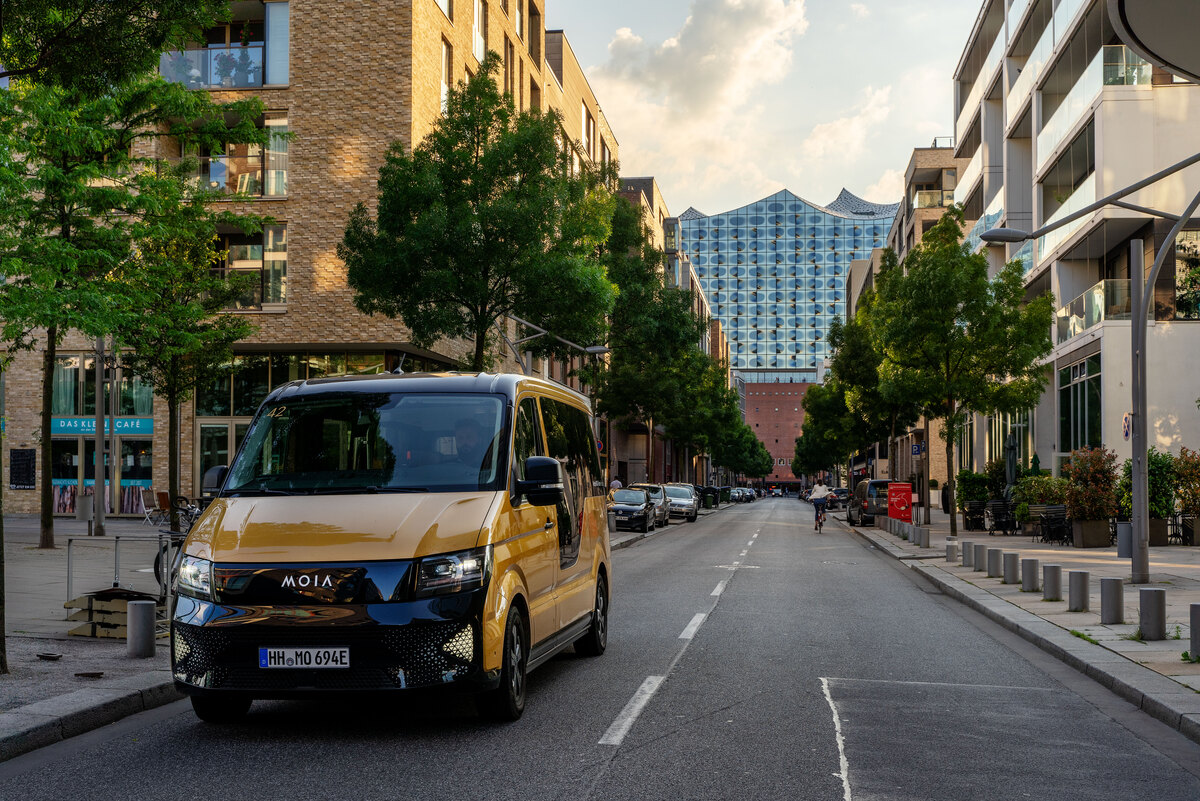
MOIA Accompanying Research
- contact:
PD Dr.-Ing. Martin Kagerbauer
Nadine Kostorz, M.Sc.
M.Sc. Gabriel Wilkes - funding:
MOIA GmbH
- partner:
Lehrstuhl für Verkehrstechnik, TU München
- start:
2019
- end:
2021
Problem Statement
New mobility services have been one of the most important research topics in transportation in the last years. Due to developments in ICT and an increasing smartphone ownership, many new business models have emerged recently and the number of providers offering flexible and on-demand services is steadily increasing. One of these type of services is ridepooling, where travel requests that correspond well spatially and timely are bundled. Customers accept small detours or stopovers, and benefit from lower prices. Due to the novelty of this form of transport, however, there is not enough knowledge on who the users of this service are, what role this service plays in everyday life, and how it changes individual mobility. The overall impact on an urban transport system is also unexplored. At the beginning of the project ridepooling services were often permitted under the so-called "experimentation clause" of the PBefG (Passenger Transport Act in Germany). Since the amendment of the PBefG in 2021, two forms of ridepooling are allowed (§ 44, 50).
Objective
The aim of this project is to examine the impact of ridepooling on an urban transport system using the example of MOIA in Hamburg in collaboration with the Technical University of Munich. MOIA is a subsidiary of the Volkswagen Group and operates about 500 battery electric vehicles in Hamburg and Hannover (currently the largest connected ridepooling fleet in Europe). The investigation of an established service offers great potentials, since real users can be interviewed about their daily routine and the framework conditions are not strongly limited by test operation character as in other studies. Thus, the effects can be researched on an individual as well as on a collective level. In cooperation with the Hamburg authorities, interrelation of possible municipal regulations will also be taken into account. At the end of the project, it should be clear which role ridepooling can play in the future in the course of the traffic turnaround.
Methods
The investigation of the users is based on a mixed method approach, which combines qualitative and quantitative research methods. In the first project phase, the IfV designed an online survey for users (Germany-wide) and non-users (Hamburg area) of MOIA, which was successfully carried out with over 12,000 participants. With these results, socio-demographics and mobility behavior of previous users can be compared with non-users. Detailed questions about the last MOIA trip provide insights into the usage patterns of customers. In addition, the survey included a choice experiment to analyze price and travel time sensitivities for new mobility services (including MOIA, e-scooters, bike- and carsharing). These findings were complemented by user interviews with customers over 55 years of age, MOIA frequent riders, and customers living outside Hamburg.
The construction of a microscopic (agent-based) travel demand model for the Hamburg region forms the core of this project. In order to represent the MOIA fleet in detail, mobiTopp is coupled with the fleet simulation of the TU Munich. Thus, the decision parameters for the choice of means of transport are exchanged in real time and take into account the actual state of the fleet. If an agent in mobiTopp decides to travel with MOIA, the booking is returned to the fleet simulation and the most suitable vehicle is selected. First, the status quo in Hamburg is mapped and then a simulation study with scenarios is carried out. Four scenarios were developed and modeled to show how mobility in Hamburg could develop in the upcoming years. Many influencing factors were taken into account: The scenarios include, for example, the expansion of public transport service planned in the Hanseatic city (new subway, commuter rail and bus lines), the expansion of road infrastructure (highways, bicycle routes), as well as expansions of alternative mobility services (bikesharing, carsharing). The effect of automation as well as the effect of possible push measures affecting private car use were also investigated. It can be shown that the effect of ridepooling strongly depends on other transport policy measures. In combination with the expansion of the public transport offer and restrictive measures for the private car, greatest savings regarding vehicle-km and emissions can be achieved.


